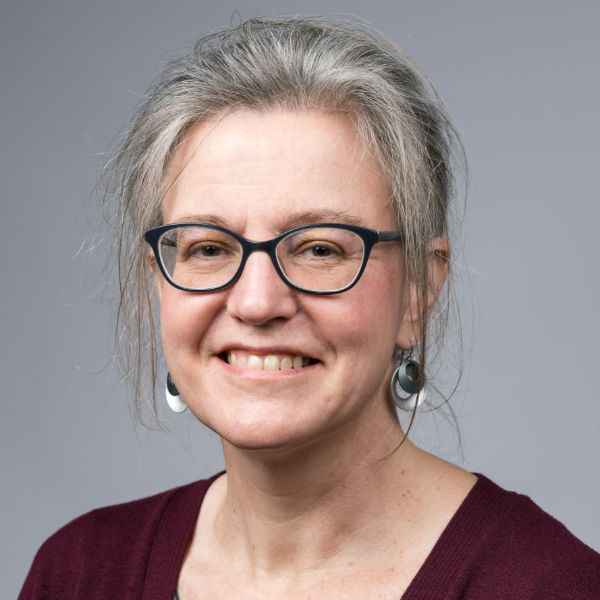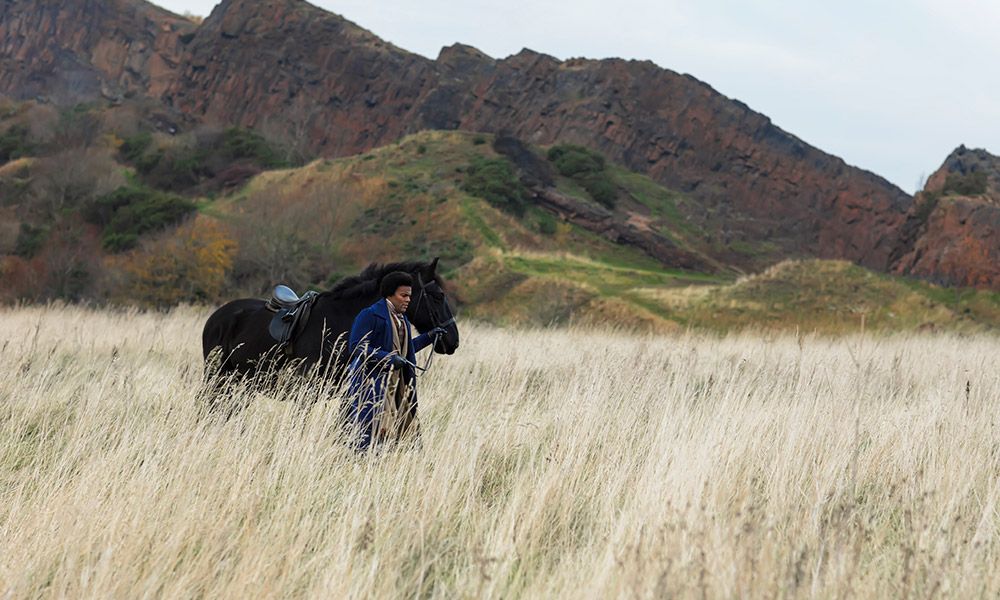A collaboration between City of Rochester schools and the University of Rochester’s Memorial Art Gallery inspires innovation where the stakes are high.
A mobile dangling from the ceiling of Anna Nicpon’s kindergarten classroom bobs and sways, its feather-light paper shapes twisting in the air. Underneath, the children are gathered and, following the lead of a guest instructor, blow and wave, their necks craned, hands high above their heads, watching the mobile respond in kind.
The guest on this March morning at the Charles T. Lunsford School No. 19, in Rochester’s southwest quadrant, is Sydney Greaves, the Estelle B. Goldman Assistant Curator of Academic Programs at the University of Rochester’s Memorial Art Gallery. The class cut and colored the shapes during a previous visit by Greaves. This time, the class is learning about dimensions and solids, as well as motion and balance.
Greaves instructs the children to stand in a circle, holding hands, as she leads them in a walking rotation. “Look at how it changes as we walk around,” she says. The shapes are flat, but the mobile itself is “three-dimensional,” Greaves notes. “It has length, it has height, it has depth.”
Next the children learn that a famous artist once built mobiles—invented them, in fact—with all of these concepts—color, shape, dimension, and movement—in mind. His name was Alexander Calder (1898–1976), and one of his mobiles, Polychrome Horizontals, is right here in Rochester, in the collections of the Memorial Art Gallery. She shares an image of Calder’s mobile on a smart screen, and the children notice the features it shares with the mobile they created.
Greaves shows the class another work from the MAG collection, this one a painting called Galaxy, by Fritz Trautmann (1882–1971), a Wisconsin-born artist who lived and worked in Rochester, both as a landscape artist and as a teacher in MAG’s Creative Workshop. Galaxy is composed entirely of circles, each an exploration of color and shadow. The result is a two-dimensional image that looks strikingly three-dimensional, a gathering of floating spheres that seem to recede into the distance.
“What do you see?” Greaves asks.
“Eyes,” one girl says, pointing to a large white sphere partially eclipsed by a small orange circle.
“Bouncy balls,” says a boy.
Greaves points out that the painting is “two-dimensional,” and yet, “it looks like we could dive in and swim around.”
“I might see a shark in there,” a girl says.
Another girl gazes at the spheres.
“Can we make them?” she asks.

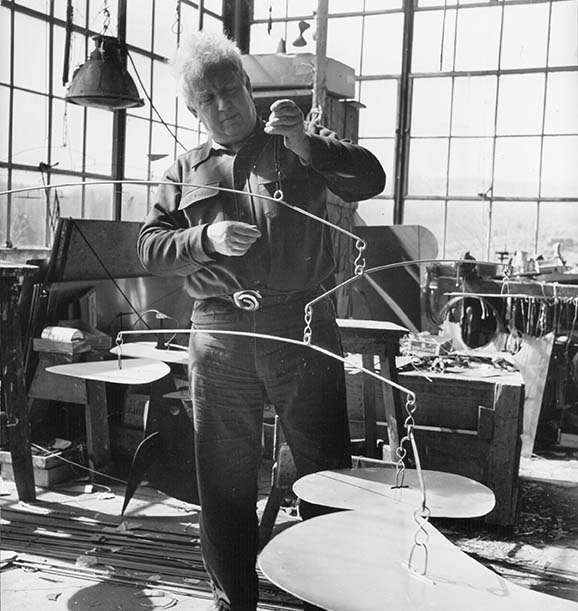
Greaves and Nicpon began collaborating early in 2022 to map out a series of lessons in which Greaves would connect the subjects and skills Nicpon was already teaching to the study and practice of art. Over the course of nine visits to Nicpon’s classroom last spring, Greaves connected topics in math, science, social studies, reading and communication, as well as social and emotional learning—all outlined in the New York State Department of Education kindergarten learning standards—to exercises that involved close observation and discussion of artworks, as well as some art making. In June, the class visited the MAG, where Greaves greeted them and led them on a tour during which they saw for the first time several of the works they had studied.
The collaboration was an ambitious example of what’s called arts integration.
What is arts integration?
Both a pedagogical method and a philosophy of education, arts integration encompasses traditional arts education and arts enrichment. But at its best, it’s something distinct from either of these practices.
Becca Rosen, a PhD candidate in teaching and curriculum at the University’s Warner School of Education, teaches a course at Warner on the theory and practice of arts integration in K–8 classrooms. “The goal of arts integration,” she says, “is both to increase students’ knowledge of a subject area, while concurrently fostering their understanding and appreciation of a particular art form.” Rosen describes the relationship between academic and artistic learning as mutually reinforcing: “The subject matter enhances student’s understanding of an art form, and then the art enhances a student’s understanding of the subject matter.”
School art teachers can play important roles in arts integration. Nicpon’s students have art instruction every fourth day for half of the school year, and their teacher, Megan Simmons, has integrated some of her lessons with Nicpon’s. For example, as the children studied picture book author Eric Carle with Nicpon, they learned how Carle made images from painted tissue paper and tried their hand at it in class with Simmons. By reinforcing one another’s lessons, Nicpon and Simmons showed their students how words and pictures work together in storytelling and in self-expression.
But the most ambitious arts integration programs usually also involve community partners. Before embarking on her PhD at Rochester, Rosen held multiple museum roles, including helping with curriculum and professional development for classroom teachers and teaching artists as education coordinator of the Learning Through Art program at the Guggenheim Museum in New York City.
The Memorial Art Gallery has a similar arts integration program. For the past several years, MAG and a group of Rochester City School District elementary schools have been partners in the Expanded Learning Collaboration, or ELC.
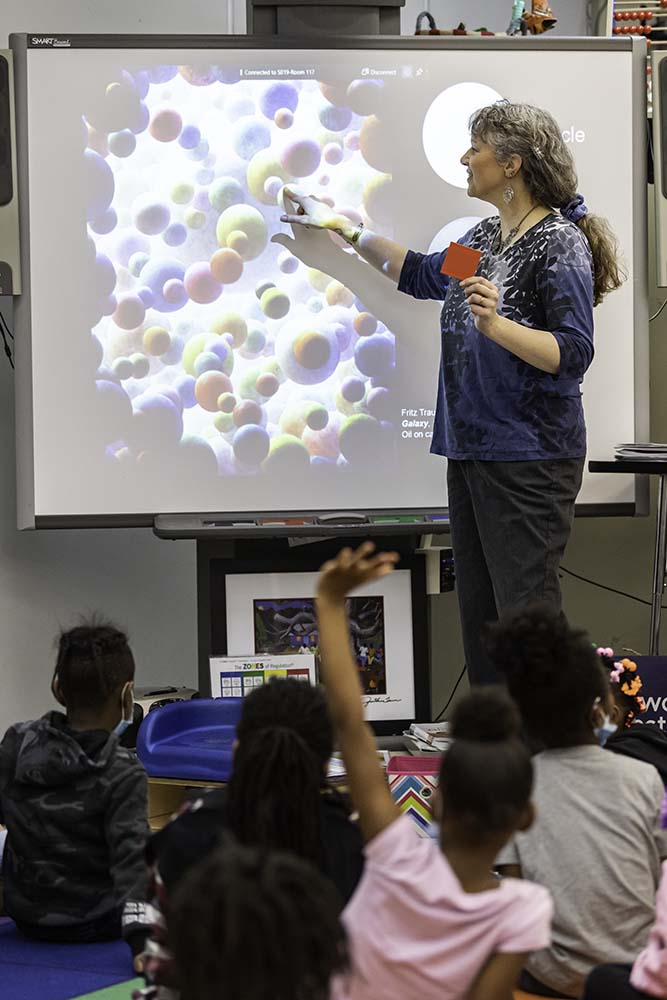
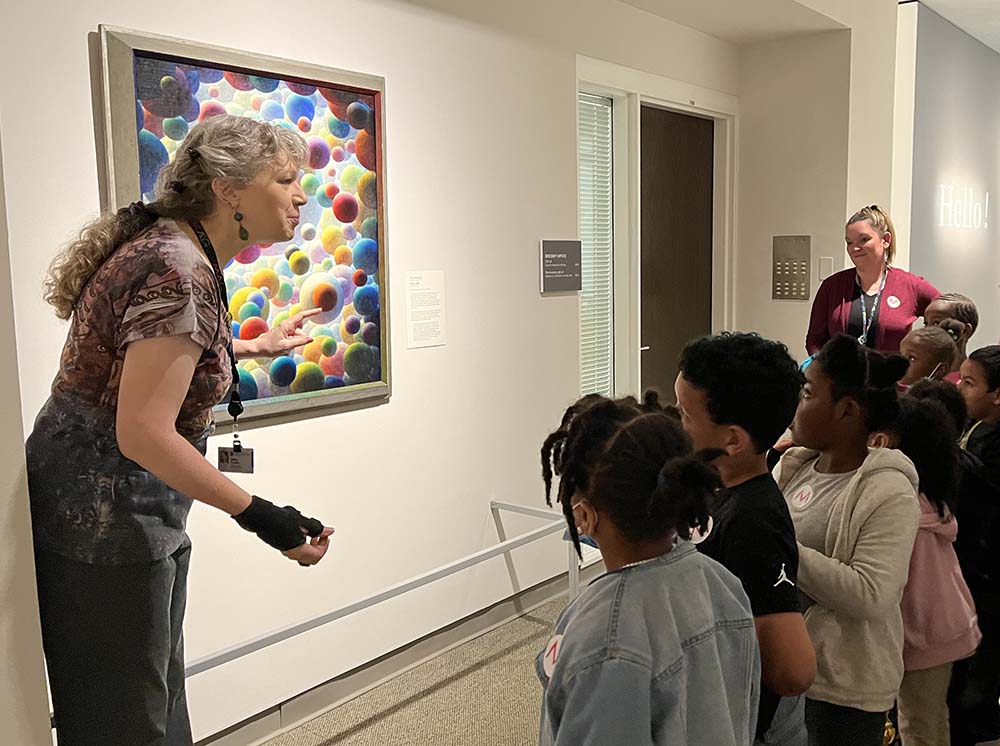
Arts integration through the Expanded Learning Collaboration
The ELC program began in the fall of 2013 with a single school, Francis Parker School No. 23, serving students in grades 1 through 6. It was designed to serve the school district’s emphasis on project-based instruction, a pedagogical practice based on the premise that motivation and retention can be enhanced when students undertake real-world, hands-on projects that have personal meaning to them. Grade by grade, students visited the museum four weeks in a row to participate in activities related to the classroom curricula that simultaneously enhanced students’ visual literacy and offered a new context for critical thinking. Led by a MAG docent, they engaged in thoughtful conversations about works of art. Then they entered the museum’s Creative Workshop space, where teaching artists encouraged them in their creation of art projects complementing what they had learned both in the museum and the classroom.
Funded by an extensive list of foundations and individual MAG donors, as well as some state and county monies, the ELC soon expanded to two additional schools. After the COVID-19 pandemic forced a hiatus, the program relaunched in 2021–22 to serve five schools, including School No. 19.
The work in Nicpon’s classroom this past spring was not strictly part of the ELC. While the grade levels of the students have varied by year and by school, the program has never served students before they’ve reached the first grade. Instead, the work in Nicpon’s classroom was the type of innovation MAG leaders hope the program will continue to inspire, as they seek to expand the program’s reach.
In spring 2020, the program’s key architect, Marlene Hamann-Whitmore, retired from MAG following a career of more than 25 years. After an international search for her replacement, MAG welcomed a new McPherson Director of Academic Programs, Nile Blunt, with the specific charge of building on the museum’s community outreach, including the ELC program.
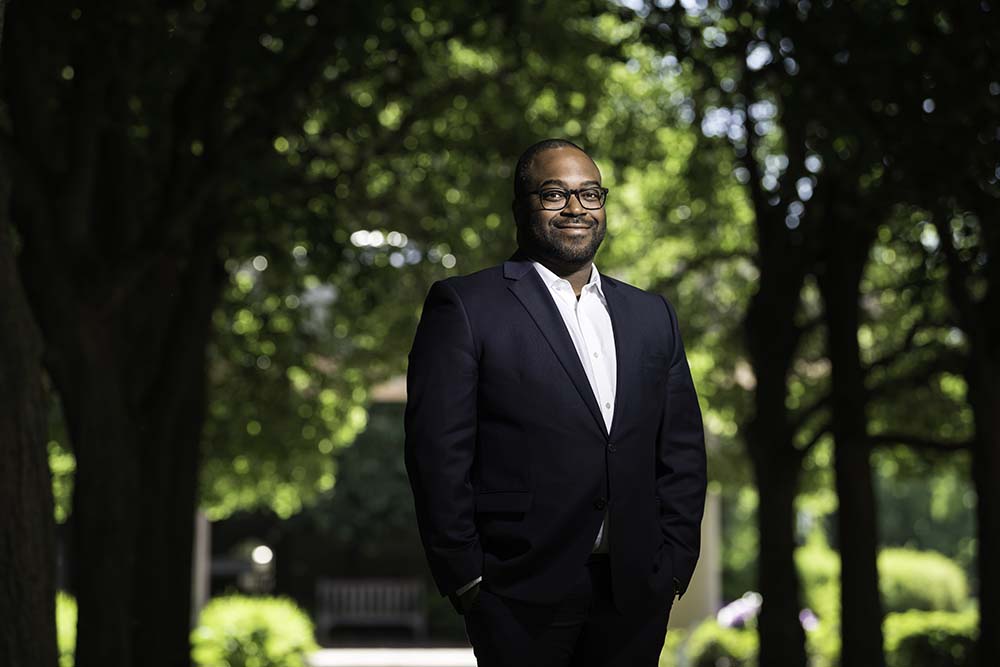
“I’ve seen a lot of museums, and I’ve never experienced a museum that has as robust a desire to engage the surrounding community as MAG does,” says Blunt, who also has an appointment in the Department of Art and Art History, where he teaches a course on museum studies.
That desire stems from the founding mission of MAG. Established in 1913 by Emily Sibley Watson, a devoted art collector and philanthropist who was a daughter of Western Union founder Hiram Sibley, the museum was to be part of the University of Rochester with permanent collections, exhibitions, and a library “held in trust for the citizens of Rochester,” for whom they would be “a means both of pleasure and of education,” according to a Democrat and Chronicle write-up announcing the museum’s opening.
The museum Blunt most recently served has similar, albeit much more recent, origins. He was the head of school programs at Crystal Bridges Museum of American Art in Bentonville, Arkansas. That museum was founded in 2011 by Alice Walton, daughter of Walmart founder Sam Walton, to make art accessible to the area’s largely rural community. Much like Rochester today, Bentonville is not a major metropolitan center, and the population in the surrounding region includes a high proportion of people living in poverty.
As head of school programs there, Blunt oversaw a school visits program that welcomes roughly 45,000 K–12 students each year; two arts integration programs with more than 30 partner schools; online and distance learning; and when the COVID-19 pandemic broke out, a 50-video series on close looking and art interpretation.
In November 2020, Jonathan Binstock, the Mary W. and Donald R. Clark Director of MAG, Blunt, and Robert Snyder, then principal of School No. 45, went on the popular local radio show, WXXI’s 1370 Connections with Evan Dawson, to talk about the present and future of ELC. On the show, Binstock called the Crystal Bridges museum education program “arguably the most innovative and pioneering educational program at an art museum in the country.” Recruiting Blunt, he suggested, was a coup for MAG, the University, and the Greater Rochester community.
Blunt, who was initially trained for a career in teaching and research, welcomed the chance to serve at a university-affiliated museum. At the University of Illinois at Urbana–Champaign, where he earned a PhD in history in 2011—or, as he often calls it, “an art history PhD masquerading as a history PhD”—he gravitated to the study of visual and material culture, completing his dissertation on ceremonial dining and religious ritual in 17th-century England.
MAG proved ideal because, Blunt says, “the nature of the relationship between the museum and the University is really unique amongst university art galleries, in terms of our focus on the city and community.” University art museums are rarely located off campus; and while that was not Watson’s intention (the museum sits on what was once the University’s Prince Street campus), its location has made it more visible and accessible beyond the University community.
Blunt speaks with passion and conviction about the effect even one visit to an art museum can have on someone who has never had the experience before.
“I’ve seen it transform people’s lives,” he says. “It sounds cliche, but it’s true. It can change someone’s entire worldview—especially a young person’s, but really anybody who hasn’t thought about the arts before, or entered a museum before. The way they start approaching art can be very different based on one visit, or one experience.”
That’s in part because art museums are naturally suited to draw people into a dialogue. MAG’s professional museum educators and volunteer docents are trained to facilitate conversations with students and other groups of visitors “that allow them to ask and answer questions, to present their own interpretation of the work of art, their own understanding of what this means,” Blunt says. “And with younger students, that kind of thinking is empowering.”
For students such as Nicpon’s and most of the students participating in the ELC program, the conversation can be as simple as the feelings they experience looking at a landscape painting. One child may see a sky that’s blue and decide she feels sad; another may point to the sun off in the corner and say the picture makes him happy. The students in this example disagree. But, says Blunt, “they both offer evidence and reasoning as to why they think as they do. And that helps create civil discourse. It helps them understand that they can both be right, even though they disagree.”
Encounters like this one prepare the way for more complex conversations about art as students reach adolescence and adulthood. They also help ensure the museum can continue to attract audiences necessary to fulfill its mission to serve for the pleasure and education of the Greater Rochester community.
The types of art a museum owns and exhibits, of course, plays a role in fulfilling that promise.
Since arriving at MAG in 2012, Binstock has moved to diversify the museum’s permanent collections and exhibitions, with a particular focus on living artists who address themes that resonate in contemporary American culture and society.
MAG’s most recent exhibitions have included National Anthem (2018) a multimedia exploration by Kota Ezawa (b. 1969) created in response to NFL athletes “taking a knee” to protest police brutality against people of color; Market of the Senses, an exhibition of video art by Tony Cokes (b. 1956) that recontextualizes familiar representations from the popular news media, inviting conversations about language, interpretation, and how we create meaning; stained-glass art by Judith Schaechter (b. 1961), who has been praised as a feminist “post-punk stained-glass sorceress”; Unfinished Business, an expansive, four-panel painting in black and white by Rochester artist and activist Shawn Dunwoody, created in the aftermath of the death of Daniel Prude at the hands of Rochester police officers; and Up Against the Wall, an exhibit of HIV/AIDS posters from around the globe, drawn from the largest collection of such posters in the world, that of the late Rochester physician Edward C. Atwater, held by the University’s Department of Rare Books, Special Collections, and Preservation.
On the radio program, Blunt shared his goal to expand the ELC program, not just in terms of the number of students who get to participate, but also in ways that keep with the program’s defining aspect of engaging in ways that are “deep, meaningful, and robust.” He drew attention to the diversity of MAG’s collections, an aspect of the museum he feared many people in the Greater Rochester community might not recognize.
Closing out his spot on the radio program, Blunt embraced the goal, long instilled at MAG, to establish a relationship with a wider community in which people “feel that the University of Rochester, in all of the ways it manifests itself across this region, is really here for everybody.” And one way he planned to do that was to go out in the community and ask, “how best can the MAG serve you?”
What can the Memorial Art Gallery do for you?
Shortly after the program aired, Blunt received a telephone call from School No. 19 principal Moniek Silas-Lee.
Silas-Lee was looking to expand arts programming at the school, where she and her colleagues were facing a challenge. More than 90 percent of School No. 19’s 344 students in pre-kindergarten through eighth grade live in poverty. Just over a quarter have documented disabilities. In 2019, based on data from several years up to and including the 2017–18 academic year, the school entered receivership, a category designated by the New York State Department of Education for schools “persistently struggling” to meet state requirements for learning proficiency.

That Silas-Lee would seek to enhance arts education under these circumstances marks her as a bold leader.
Several studies have pointed to a correlation between the rise in accountability, as measured through standardized testing, and a decline in K–12 arts education. While there’s much evidence that arts education helps students hone many valuable skills—a causal connection between arts education and measurable success in other areas has been harder to establish. Moreover, the broad benefits of arts education can take time to manifest. Given those circumstances, educators facing numeric targets and a tight timeline have strong incentives to focus on drilling down in academic subjects, sometimes at the expense of arts education.
But Silas-Lee, who arrived at School No. 19 in 2017, says they tried “hunkering down,” taking safe approaches to teaching, and strengthening professional development as needed. That approach, she says starkly, “wasn’t working.”
She and many of her colleagues couldn’t help but notice how much students and parents alike appreciated and valued the Strings for Success program, a collaboration between the school and the local nonprofit Center for Youth that has spanned 14 years. The program works with volunteer instructors and donated instruments to offer weekly violin lessons to any School No. 19 student in grades 2 through 8 with an interest—that was 130 students during the 2019–20 school year. The students hear from guest artists, play together in ensembles, and take field trips and perform in destinations as near as Eastman Theatre and as far away as Washington, DC, and New York City.
Wednesdays—the day of the Strings for Success lessons—have long been distinguished by the highest attendance rates, Silas-Lee notes. When the COVID-19 pandemic forced schools to move to remote learning, the Strings for Success program continued online, with high levels of attendance and engagement. That spring, eight of the school’s students were accepted into the music program at School of the Arts (SOTA), a Rochester City School for grades 7 to 12 that requires a formal audition.
In the fall of 2020, she brought together her administrative team to brainstorm about other, similar ways to bring arts into the life of the school. Establishing partnerships with arts organizations seemed a natural route to try—and that’s when one of her teachers, Carla Carey, heard Binstock, Snyder, and Blunt on the radio. “She said, ‘Moniek, we should really reach out to [Blunt]. He sounds like he’s really in line with what we’re thinking,” Silas-Lee recalls.
Silas-Lee met with Blunt and made a pitch for a partnership with School No. 19. “He loved it,” she says, “and we started from there.”
By the end of the 2020–21 school year, Silas-Lee and her team had established partnerships with MAG as well as two other organizations, the Hochstein School of Music and the Rochester Broadway Theatre League. Including the Strings for Success partnership with Center for Youth, the school had established four connections, the pillars of the “Arts 4 All” initiative Silas-Lee would introduce in fall 2021.
That spring, to prepare her staff, Silas-Lee arranged for them to take a trip to each of the partnership organizations. Nicpon—who had never been exposed to art museums as a child—was captivated by MAG.
Silas-Lee calls Nicpon “a go-getter.”
“If she sees the benefit something has for our students, she is the first one on board,” Silas-Lee says.
Nicpon was not dissuaded by the fact that her students were younger than any served thus far by the ELC program. And like Silas-Lee, she does not view the pursuit of arts integration as a risk. She concedes that teachers often worry that enhanced art education will mean they may not get through their curricula. “But I didn’t worry so much,” she says. “My science and my social studies, I did through the arts. That time that Sydney was here was extremely valuable.”
Greaves helped cover not only colors, shapes, dimensions, and movement, but also the five senses, the states of matter, animals and habitats, and multiple topics in communication and social and emotional learning.
“We didn’t get to the cityscape,” Nicpon says with an air of disappointment. “It just got so busy.”
Bringing art in has made the lessons “joyful,” Nicpon says. And the reactions of the kids—all just emerging from the COVID-19 pandemic, and all experiencing their first classroom setting just this year—is one of “total engagement.”
In June, the class finished off its year with a visit to MAG. There they greeted Greaves—“Ms. Syndey,” as they call her—and saw several of the works they studied, there in real life, for the first time.
Greaves is always struck by the reaction of the young students in the ELC program when they visit the museum. “They have prior knowledge that they didn’t have before and then they see the artworks in real life as opposed to a screen, and it’s really empowering. They just own those artworks.”
Nicpon snapped pictures at the visit as though she were documenting a family outing. “They were pointing—‘we know that picture!’,” she says. “And my little ones who like goofing around—they were just in awe.”
As with all school-related visits to MAG, each child left with a free visit pass for themselves and a family member.
Broadening the reach of arts integration
Silas-Lee says the collaboration between MAG and Nicpon this year stretched the possibilities of arts integration, offering a template for the education she’s working to provide all the students at School No. 19: “The students have art in their lives from the very first time they start to learn to read or write. All they’re going to ever know is that art is a part of school. And school is a part of art.”
Meanwhile, Blunt says he and his team continue to build educational partnerships across the city and region, inspired by the model of arts integration and the success of ELC. For example, students and instructors in Encompass: Resources for Learning, a program of the Education Success Foundation, are taking a deep dive into the visual arts through a series of teacher professional development workshops and field trips to the museum.
In addition, an important and symbolic development on MAG’s grounds is well underway. For nearly 30 years, MAG’s neighbor to the west has been SOTA. A few years ago, the acclaimed artist Rashid Johnson traveled from his home in New York City to MAG to explore ideas for a new work. Outside he was struck by the mostly Black and Brown students mingling outside the school’s entrance on Prince Street. Yet there was nothing on the west side of the museum comparable to the east side’s Centennial Sculpture Park to entice these potential visitors.
When the sculpture park’s expansion is complete, visitors coming from the west will be welcomed to the museum along a winding pathway with a 40-foot-wide, 10-foot-tall mosaic sculpture by Johnson as the park’s centerpiece.
It’s a physical expression of the museum’s longstanding, and now reinvigorated, mission to “intentionally build a sense of belonging and ownership of the museum,” says Blunt. “Our goal is help young people in the City of Rochester understand MAG to be a vital part of their own communities—just like their schools, places of worship, and recreation centers.”

